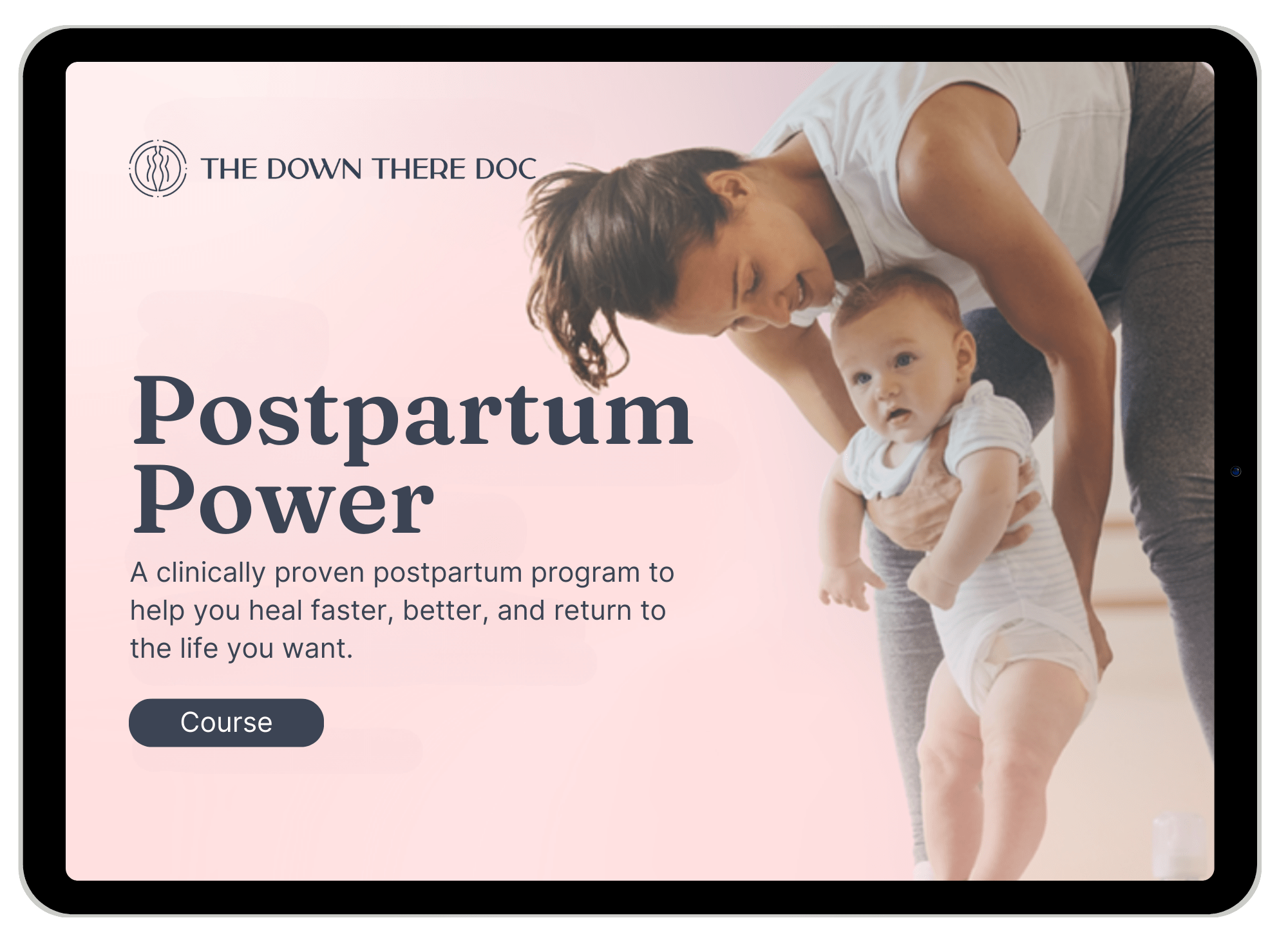What Causes Incontinence
Incontinence is a common condition that affects many women, particularly during pregnancy and postpartum. It can be distressing and impact various aspects of a woman’s life. However, it’s essential to remember that there are ways to manage and treat incontinence, and get your freedom back!
In this blog, we will explore the three types of incontinence (stress, urge, and mixed), discuss why it occurs during pregnancy and postpartum, highlight its impact, and offer several treatment and management options, including the effectiveness of physical therapy.
See Also

Incontinence During Pregnancy and Postpartum
During pregnancy, the growing uterus puts pressure on the bladder, which can lead to stress incontinence. Hormonal changes can also weaken the pelvic floor muscles, contributing to the development of incontinence.
Additionally, the stretching and trauma experienced during childbirth can further exacerbate urinary incontinence postpartum. It’s important to note, however, that incontinence after giving birth is not permanent and can often be resolved or managed effectively.
Impact on Women’s Lives
Incontinence can have a significant impact on a woman’s life, both physically and emotionally. It can lead to a loss of confidence, social embarrassment, and a restriction of daily activities. Many women may experience anxiety or depression due to the fear of leakage or the stigma associated with incontinence. However, it’s crucial to remember that help is available, and there are several treatment and management options to improve the quality of life.
The 3 Different Types of Incontinence
Urge Incontinence
This is when you get the feeling that you have to go really frequently. You have to rush to the bathroom and sometimes you can’t get there on time. You may have triggers like hearing running water or pulling into your driveway.
Stress Incontinence
This is when you leak because you were laughing, coughing, jumping, or exerting yourself in some way. It can even happen when you sneeze, to learn more about the connection between allergy season and incontinence, check out THIS article.
Mixed Incontinence
This is when you have both Urge and Stress Incontinence. You have to go to the bathroom suddenly and leak while you are on your way AND you leak when you sneeze, cough, laugh, etc. I know — not fun!
Management and Treatment Options
If you are experiencing or have experienced incontinence in any form it can be incredibly frustrating, limiting, and for some women embarrassing. The good news is that you don’t have to just live with it! Here are a couple of options to heal from and manage incontinence:
Pelvic Floor Exercises
Strengthening the pelvic floor muscles through specific exercises can help improve bladder control and reduce episodes of leakage. These exercises involve contracting and relaxing the muscles that support the bladder and urethra, along with overall core rehab and strengthening.
A great place to start is my free training, 3 Postpartum Exercises to Properly Retrain Your Pelvic Floor.
OR if you want a full-on program with education, exercises, resources, community, and access to The Down There Doc team for questions and guidance — check out my birth prep and postpartum courses.
Lifestyle Modifications
Certain lifestyle changes can significantly improve incontinence symptoms. Maintaining a healthy weight, avoiding bladder irritants such as caffeine and alcohol, and staying hydrated are essential. Additionally, practicing regular bathroom habits and avoiding prolonged periods of holding urine can also be beneficial.
Bladder Training
Bladder training involves gradually increasing the time between bathroom visits to help retrain the bladder and increase its capacity. This method can be effective in managing both urge and mixed incontinence.
Check out my blog on double-voiding for a quick trick for fewer trips to the bathroom.
Medications
In some cases, medications may be prescribed to help manage incontinence symptoms. These medications can help relax the bladder muscles or reduce urinary frequency and urgency. Talk to your health care provider if you’re struggling!
Physical Therapy
Physical therapy, particularly specialized pelvic floor rehabilitation, can be highly effective in treating incontinence. It involves working with a trained therapist who will guide women through exercises, manual techniques, and other modalities to strengthen the pelvic floor muscles and improve bladder control.
If you don’t have access to a Pelvic Floor PT (whether its cost, schedule, child care, etc.) you’re not alone! Unfortunately, Pelvic Floor PT is not as accessible as we’d like for it to be, that’s why I created my online courses and community. If you’re looking for affordable, on-your-own-time, from-home help my courses are perfect for you! Learn more HERE.
Here’s the bottom line
Incontinence “protection” is a billion-dollar industry and they bank on the disturbing fact that we expect women to continue to leak and have it get worse as we age, as evidenced by the model of “start with liners then go up to diapers.”
In fact, one such pad company, not to mention names but rhymes with noise, actually had a big campaign a year or so ago saying that since this is such a normal thing it shouldn’t stop you from living your life and being the woman you want to be. Love the sentiment, but it missed the mark. They say “Wear our pads and feel good about it!” When they should have said, “We are here when you need us and we hope you don’t need us forever.”
Just because this is a common problem, does not mean it’s normal and it’s not something you should have to live with forever. There are viable options for treating and managing incontinence, and I’m not talking about wearing pads for the rest of your life.




